This is part of a series from The Rivalry naming the five greatest PBA players from UAAP and NCAA member schools. Some ground rules to explain the rankings:
1. Players are ranked according to their PBA achievements, and NOT their college achievements.
2. If a player played for more than one school in college, the series writers – Jay Mercado and Jude Roque – will decide between themselves which school the player will fall under.
3. Players who excelled in college but whose playing years preceded the PBA are unfortunately not included (i.e., Caloy Loyzaga for San Beda).
4. Players who played for a college or university before that school joined the UAAP or NCAA are included for consideration.
5. Only current UAAP and NCAA member schools are included in the series, but not necessarily all of them.
University of the East Red Warriors
The University of the East Red Warriors are original members of the UAAP, dating back to the league’s inception in 1938. The Recto-based school used to be the winningest team in the UAAP with 18 championships, copping 13 trophies in the 1960’s and 1970’s alone.
They own the league record of seven consecutive UAAP championships, a run that started in 1965. They also hold the record for most consecutive finals appearances ever with 16 straight from 1957 until 1972, a record that most likely will never be broken. Their last championship, though, happened in 1985 and the Warriors have been in a flux ever since.
The Rivalry lists down the top five PBA players from the UE Red Warriors.
5. Paul Lee (UAAP 2007–10/PBA 2011–present)
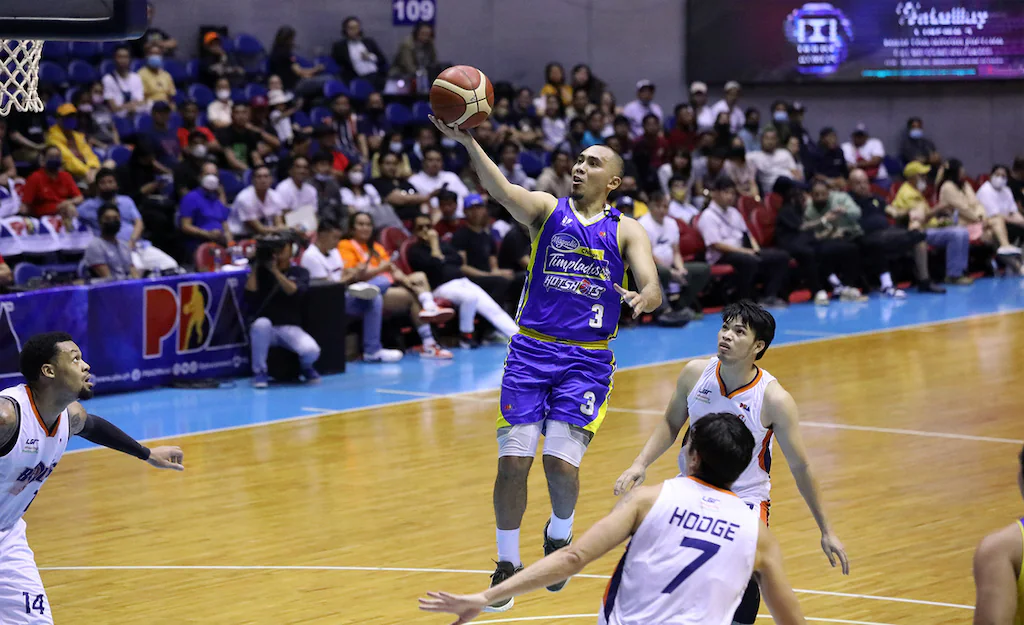
UAAP career
2x UAAP Mythical Five (2009, 2010), UAAP 2009 Most Improved Player (2009); PBL Best Player of the Conference (2008-09 Flex Linoleum Cup), 2x PBL Mythical First Team (2009, 2010)
When Paul John Lee joined the Warriors as a freshman in the 2007 season after a sterling high school career with the San Sebastian Staglets, he became part of a phenomenal UE run that swept the eliminations, winning all 14 games. They hit a snag, however, losing to the La Salle Green Archers, 2-0, in the Finals. Lee, who had to play backup to vital cogs James Martinez and Marcy Arellano for two seasons, stepped up in 2009 under new coach Lawrence Chongson after Arellano left and won the Most Improved Player award while earning a slot in the Mythical Five. The team also figured in the finals, losing to Ateneo in three games. He replicated his Mythical Five success in 2010 but UE failed to reach the Final Four, winning only 5 of 14 games.
PBA career
Accomplishments: has played 452 PBA games so far; averages 13.93 points, 3.62 rebounds, 3.08 assists, and 0.71 steals per game; 3x PBA champion; 2018 Governors’ Cup Best Player of the Conference; 2016 Commissioner’s Cup Finals MVP; 2x Mythical First Team; 2x Mythical Second Team; 2012 Rookie of the Year; 2015 Comeback Player of the Year; played for the PBA-reinforced Gilas national team in the 2014 FIBA-Asia Cup and 2014 World Cup
Lee joined the PBA draft at the same time when Gilas 1.0 was disbanded and their top players opted to turn pros as well. Powerade was bent on getting JVee Casio, Gilas 1.0’s primary playmaker, as the top pick of the draft. This augured well for Coach Yeng Guiao of Rain or Shine, the team drafting second, who personally preferred Lee. With Lee around and Guiao assembling a roster of young, talented players, the E-Painters ended up in the middle of the pack at fifth in the All Filipino, before dropping to eighth in the Commissioner’s Cup after struggling with Duke Crews as their reinforcement. In the Governors’ Cup, Lee led ROS to the Finals against B-Meg Llamados but aggravated his shoulder injury with 2:24 in the fourth quarter of Game 2. He wasn’t able to complete the series but ROS ended up winning in 7 games.
Lee finally established himself in the 2016 Commissioner’s Cup as he led the E-Painters to its second franchise title against the Alaska Aces, winning Finals MVP honors. He was then traded to Star Hotshots in 2016 and continues to be the primary gunslinger of the squad. His ability to score anywhere from within 25 feet makes him extremely difficult to defend against. But his signature move of barreling inside using his shoulder to create separation against his defender gave the “Angas ng Tondo” the fifth slot in this list of greatest PBA players from UE.
4. Jerry Codiñera (UAAP 1983–87/PBA 1988–2005)
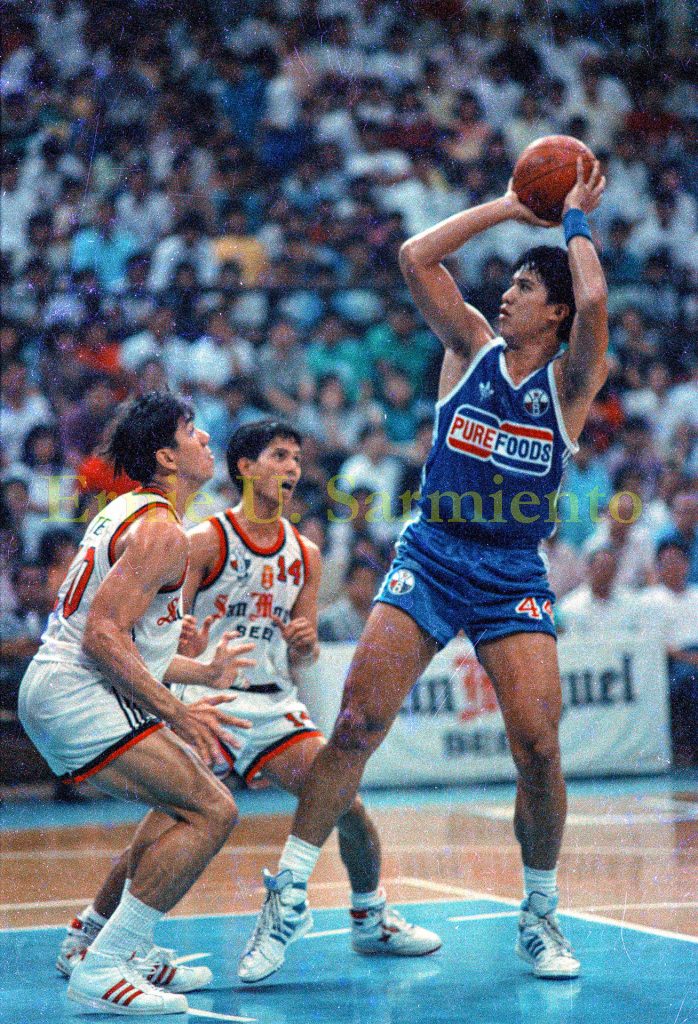
UAAP career
2x UAAP champion (1984, 1985), PABL MVP 1985 Challenge to Champions’ Cup
The son of baseball legend, Filomeno Codiñera, Jerry found his true calling in basketball and hooked up with UE in 1983. By 1984, he was already one of amateur basketball’s best big men at the tender age of 18, and eventually became part of the NCC national team. He teamed up with crack hotshot Allan Caidic to give UE back-to-back championships in 1984 and 1985, then led the Warriors to runner-up finishes against the UP Maroons in the 1986 season and the Ateneo Blue Eagles the following season. Codiñera also won the 1985 PABL Challenge to Champions MVP award while playing for Lagerlite and won 2 PABL titles for Magnolia in 1986 and 1987. As a mainstay of the national team, he prepared himself for the PBA by playing with the national squad that played as a guest team in the league in 1987.
PBA career
Accomplishments: played 871 PBA games; averaged 12.48 points, 8.08 rebounds, 1.29 assists, 0.39 steals and 1.40 blocks per game; 5x PBA champion; 2x Best Player of the Conference; 3x Mythical First Team; 5x Mythical Second Team; 1994 Defensive Player of the Year; 9x All-Defensive Team; played for the PBA-reinforced national team in the 1994 Hiroshima Asian Games; member of the PBA’s 25 Greatest Players
Purefoods joined the PBA in 1988 and was rewarded with several incentives, including the option to directly hire four amateur players from any team, plus securing the top pick of the 1988 draft after buying the Tanduay franchise. The Hotdogs took advantage and collared Codiñera, Jojo Lastimosa, Glenn Capacio and Alvin Patrimonio while securing Jack Tanuan in the draft. Codiñera was immediately inserted in the team’s starting lineup to play alongside the legendary Ramon Fernandez. In 1989, Codiñera earned the title “Defense Minister” after showing his true mettle as a defensive anchor of the Hotdogs while establishing an all-time PBA record among locals with 11 blocks in a game on opening day of the 1989 Reinforced Conference. Most of these were done against SMB’s import, Keith Smart, the hero of the 1987 US NCAA championship.
Codiñera formed a twin tower combination with Patrimonio that made the Hotdogs a perennial championship contender in the 1990’s. He won five championships with the franchise, while earning Defensive Player of the year honors and was runner-up to Patrimonio for MVP in 1993. His performance merited him a slot in the 1994 RP Team that played in the Hiroshima Asian Games. He was then traded to Mobiline for Andy Seigle in a move that shocked millions of fans, heartbroken to see the end of his partnership with the Captain. After playing three seasons with the Phone Pals and four with the FedEx Express, Codiñera retired in 2005 but not after being named as one of the PBA’s 25 Greatest Players of all time.
3. James Yap (UAAP 2000–03/PBA 2004–present)
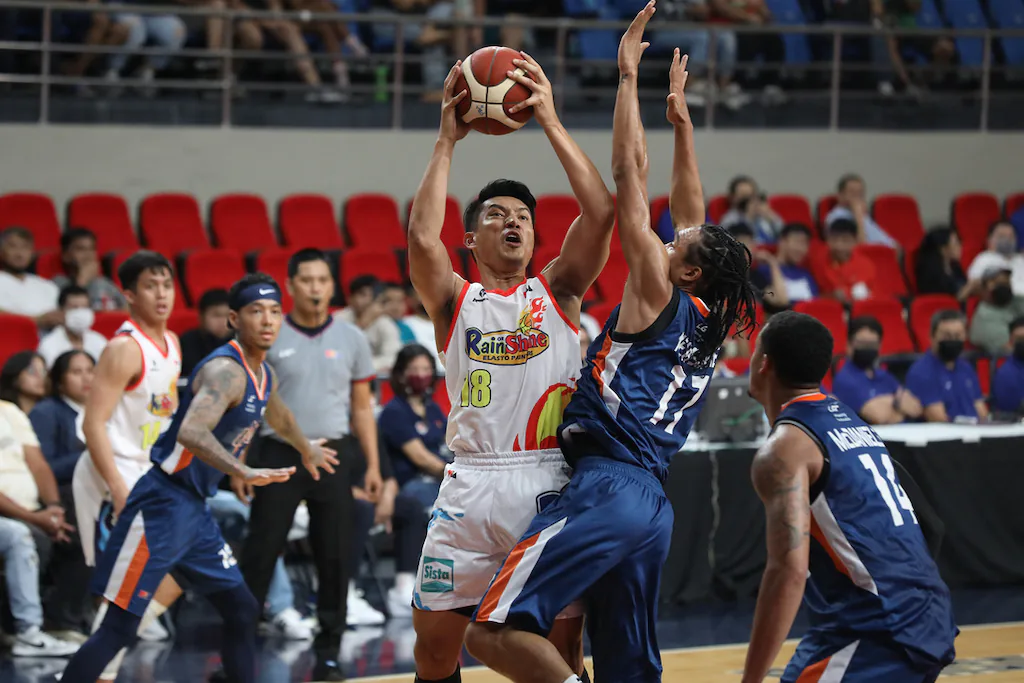
UAAP career
UAAP MVP 2003, 2x Mythical First Five (2002, 2003)
James Carlos Yap was such a big name in high school while playing for the Bacolod Tay Tung and Iloilo Central Commercial High School that scouts in Manila were already salivating at the prospect of recruiting him. Armed with big hands that allows him to clutch the basketball with ease, he ended up playing in Recto where he became an instant star, setting up a formidable partnership with Paul Artadi called “Boy Thunder” and “Kid Lightning.” The Warriors found themselves in the Final 4 in 2002 and 2003, losing out to the eventual champions of those seasons – the Ateneo Blue Eagles and the Far Eastern University Tamaraws, respectively. He was the UAAP’s MVP in his final year in 2003 before turning pro in the 2004-05 PBA season.
PBA career
Accomplishments: has played 744 games so far; averages 14.8 points, 3.9 rebounds, 1.4 assists and 0.6 steals per game; 7x PBA champion; 2x Most Valuable Player; 4x Finals MVP; 2009-10 Philippine Cup Best Player of the Conference; 3x Mythical First Team; 2011 Mythical Second Team; 2009 Scoring Champion; member of the PBA’s 40 Greatest Players
Purefoods’ coach Ryan Gregorio was pleasantly surprised to see Rich Alvarez being selected first overall by Shell in the 2004 rookie draft. He didn’t think twice in choosing Yap to be the second pick, thereby teaming him up with Kerby Raymundo and Marc Pingris to form an explosive frontline. After three conferences, the franchise entered the finals once more, only to lose to Red Bull in the 2005-06 Fiesta Conference. But the Hotdogs exacted vengeance the succeeding conference in the All Filipino, defeating the Thunder, 4-2, to give Yap his first PBA title and his first of two MVP plums.
Yap eventually became the face of the league and established a rivalry with Ginebra’s Mark Caguioa. The Hotdogs made a finals appearance once more in the 2007-08 Philippine Cup but succumbed to Sta. Lucia, 4-3. He won his second championship in the 2009-10 Philippine Cup and won his first Finals MVP award as well as his second MVP season award. He went on to win five more, including three in the 2014 season when the San Mig Coffee Mixers won the grand slam that year, a legacy-cementing feat that earned for him a slot in the PBA’s 40 Greatest Players and the third spot in this list.
2. Allan Caidic (UAAP 1981–85/PBA 1987–1999)
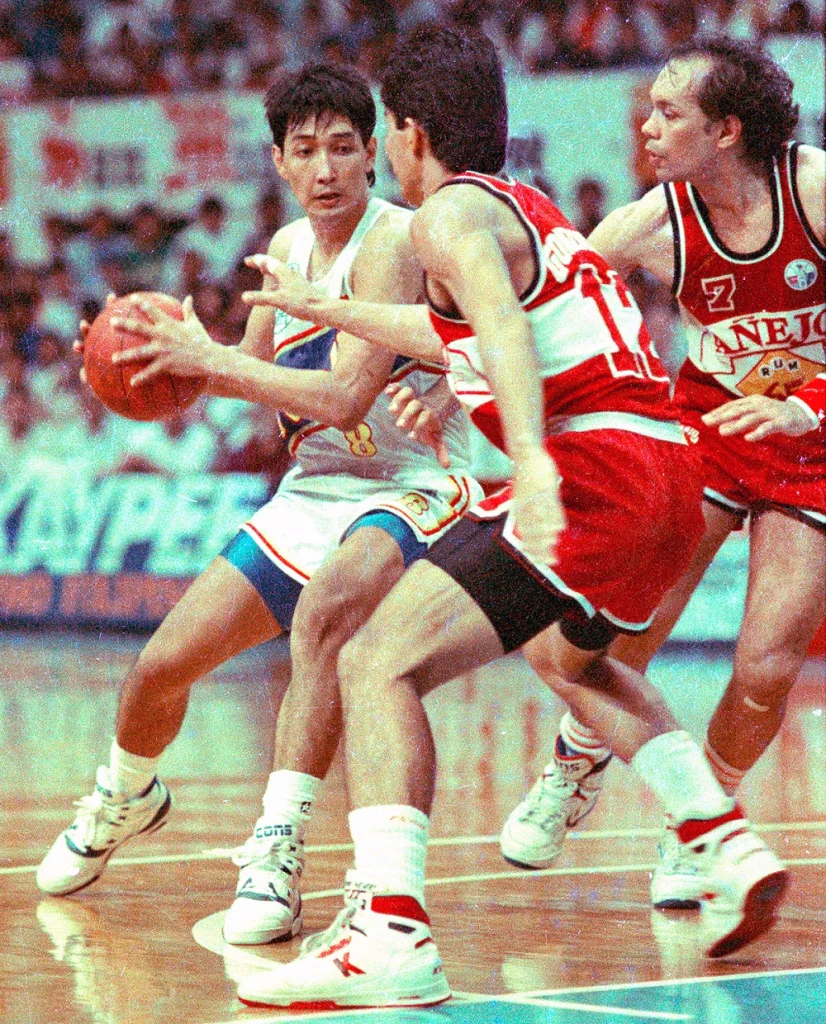
UAAP career
3x UAAP champion (1982, 1984, 1985); 3x UAAP MVP (1982, 1984, 1985); 4x UAAP Mythical First Five (1982 to 1985); member of NCC national team (1984 to 1986)
It would come as a surprise that Allan Caidic wasn’t able to make the final rosters of Ateneo and Mapua after participating in the school’s tryouts. Fortunately for UE, Caidic decided to enroll in an engineering course while earning for himself a roster spot with the team. He first played in 1981 where he helped lead the team to the Finals, losing to the Anthony Williams-led FEU squad. The team came back strongly the succeeding year, winning the championship over the Len Albino-led UP Maroons team, with Caidic firing 30 points and winning his first of three UAAP MVP titles. He then won two more championships in 1984 and 1985, winning both MVP awards in a massive display of dominance. His efforts were not ignored by national team coach Ron Jacobs, who immediately inserted him in the NCC roster that won the 1985 Jones Cup, the 1986 ABC where he won MVP honors, and defeated the Banco di Roma Italian ballclub in the 1985 World Interclub tournament. He was also part of the Golden Bronze team that played in the 1986 Seoul Asian Games.
PBA career
Accomplishments: played 598 PBA games; averaged 19.60 points, 2.78 rebounds, 2.60 assists; 0.85 steals per game; 5x PBA champion; 1990 PBA Most Valuable Player; 1995 Governors’ Cup Best Player of the Conference; 6x member of the Mythical First Team; 2x member of the Mythical Second Team; 1987 Rookie of the Year; member of the PBA’s 25 Greatest Players; member of the 1990, 1994 and 1998 PBA-reinforced national teams in the Beijing, Hiroshima and Bangkok Asian Games
Name any PBA scoring record and don’t be surprised if Caidic owns it. Widely acknowledged as the greatest long-distance shooter in Philippine basketball history, the Triggerman’s offensive skills have forced the league’s coaches to change the way they defended players. After several maneuverings, Great Taste coach Baby Dalupan found a way to secure the first overall pick of the 1987 draft which he used to pick the hotshot scorer. On his first season alone with the Coffeemakers, Caidic helped steer a veteran-laden team to the finals twice (thrice if we’ll include the PBA-IBA tournament), winning the All-Filipino conference, while becoming only the third rookie behind GTC teammates Arnie Tuadles (1979) and Ricky Brown (1983) to join the Mythical Five selection.
He went on to win one more crown for the Gokongwei franchise in the 1990 All-Flipino, and was named MVP later that year, before getting traded to San Miguel Beer in 1993 by Sta. Lucia (the team that acquired the Presto franchise). To accommodate Caidic in the roster, his NCC teammates and good friends Samboy Lim and Hector Calma offered to take salary cuts. He went on to win three more championships with the Beermen while continuing to serve the national team as its primary zone buster. He holds the PBA record for the highest number of points in one game with 79, in one half with 53, and in one quarter with 37. Caidic is not just one of the most decorated players in league history but is also one of the most admired and most emulated by fans. He would have easily been the top PBA player from UE had it not been for one…
1. Robert Jaworski (UAAP 1964–67/PBA 1975–98)
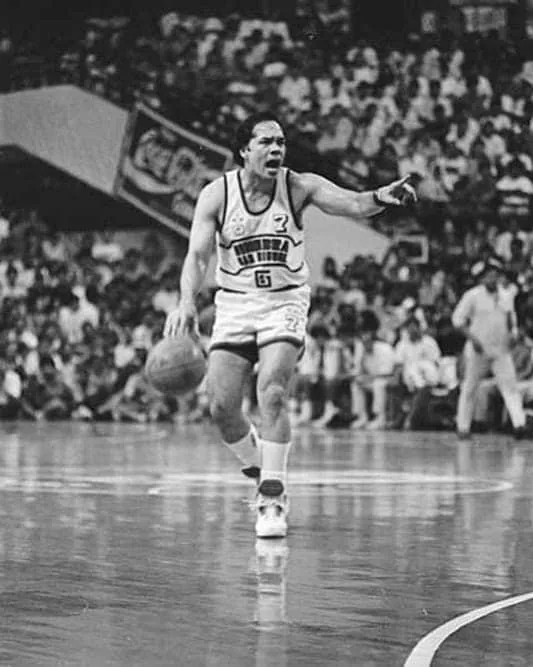
UAAP career
2x UAAP champion (1965 and 1966); 1966 UAAP MVP; 1964 UAAP ROY
Robert Jaworski joined a UE team in 1964 that had just won back-to-back titles and was aiming for a three-peat. They were hard-pressed to achieve this after losing mainstay and top UE player Jimmy Mariano. As such, UST defeated FEU in the finals, 2-1, but Jaworski earned the recognition for winning the Rookie of the Year honors. Capable of playing the guard, forward and center positions, Jaworski’s versatility carried the Warriors to back-to-back championships in 1965 and 1966, as well as a co-championship with UST in 1967, while winning MVP honors in 1966. There was no question by then that this young multi-dimensional player from Baguio City was becoming the best player in the country, having been named in the Philippine national team that won the gold medal in the 1967 Seoul ABC tournament. He continued to be a fixture in the national team except for the period when he was suspended between 1971 and 1973. Not only was Jaworski the best and most talented player in the country, he was equally the most popular already, rivalling the following of YCO great Freddie Webb.
PBA Career
Accomplishments: played 958 PBA games; averaged 12.24 points, 5.6 rebounds, 6.08 assists and 0.98 steals per game; 13x PBA champion; 1978 PBA Most Valuable Player; 6x member of the Mythical First Team; 2x member of the Mythical Second Team; 2x member of the All-Defensive Team; member of the PBA’s 25 Greatest Players; PBA all-time leader in assists
Younger fans would only remember the Big J when he was already serving as playing coach of Ginebra, the first local to ever do so. But older fans would marvel at how phenomenal Jaworski was at the peak of his playing career. He was the league’s undisputed best playmaker and the top passer. He ended up runner-up to Freddie Hubalde for the 1977 MVP award before finally winning the top individual recognition the year after, averaging 20.4 points, 10.2 rebounds and 8.2 dimes and 1.80 steals in an incredible display of all-around talent while ranged against imports of unlimited height.
More than this, he was the face of the league from its onset until he left to become a Senator of the Republic in 1998. The silhouette of Jaworski dribbling serves as the official logo of the PBA. When the league lost Crispa and Toyota, it was his rivalry with former teammate Ramon Fernandez that riveted the fans and made the league even stronger. His never-say-die attitude rubbed off on his teammates and players, practically patenting this mindset for his team, Ginebra San Miguel. And because of Jaworski, Ginebra became and remains the country’s most popular ballclub in Philippine basketball history. So many accolades but there’s no denying where the Big J sits in this list of the greatest PBA players from the University of the East.
Honorable Mentions: Boy Kutch, Jimmy Manansala, Rudy Distrito, Bong Ravena, Ronald Tubid
PREVIOUS LISTS
